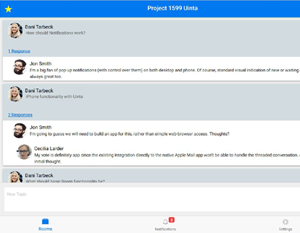An Exclusive Component of Micro Focus Enterprise Messaging
You’ve been with GroupWise for a while, right? Maybe you’re feeling it’s a bit dated. After all—there are emerging trends in enterprise communication that look new and exciting. These social enterprise networking trends promise everything from more employee productivity to the “death of email”. But GroupWise is just email, right? Wrong!
With Micro Focus Enterprise Messaging, you can now expand the functionality, security, and social enterprise networking abilities of GroupWise. GroupWise TeamWorks (available only through Micro Focus Enterprise Messaging) brings the excitement and productivity of the latest social enterprise networking trends to GroupWise, without having to sacrifice the proven track record of email. Rather—working together, GroupWise and GroupWise TeamWorks launch a new era for Micro Focus collaboration and proves you’ve invested in a solid, secure, and progressive communication platform built for modern and mobile enterprise messaging.
Micro Focus Enterprise Messaging?
First of all, let’s tackle what Micro Focus Enterprise Messaging is all about. For those that have GroupWise and are current on maintenance—you now have two options with the release of GroupWise 18. The first option is to just upgrade to GroupWise 18 and get all the benefits of integrated Messenger, better Filr integrations, and the renewal of the product lifecycle when it comes to support.
However, if you’re looking for the most that GroupWise can bring to your organization—you should upgrade to Micro Focus Enterprise Messaging. This new product not only brings you GroupWise 18 (along with all the benefits there), but also a host of other features—like back-up and recovery of your GroupWise systems, archiving of email, better and easier mailbox management, antivirus, anti-spam—and to top it all off, the fun and functionality of GroupWise TeamWorks. (Figure 1).

What is GroupWise TeamWorks?
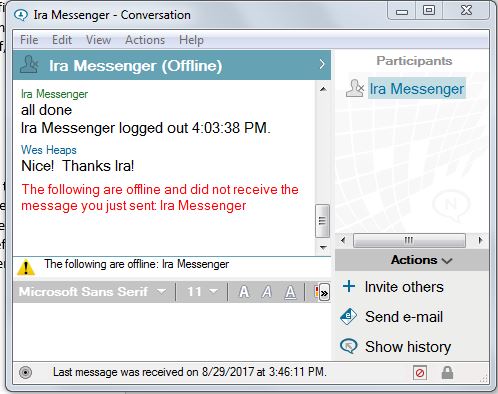 If you’re a long term GroupWise user, you know all about GroupWise Messenger. Messenger allows you to have instantaneous chats with other GroupWise individuals or even groups of your coworkers.
If you’re a long term GroupWise user, you know all about GroupWise Messenger. Messenger allows you to have instantaneous chats with other GroupWise individuals or even groups of your coworkers.
While Messenger is a great tool—the drawback of it is that it ends up splitting communications between email and instant messages. If your co-worker was not signed into the tool—you were essentially left with sending an email or your instant messages were not delivered to them.
Along came social media and the popular way they use their messaging functions. Start a conversation with a group of friends via their messenger tools—and you get instant notifications that there has been a new comment added. The message gets delivered, despite your online/offline status and is inserted into the flow of conversation. The popularity and functionality of these messaging tools is enormous—tackling everything from inserting pictures, sending files, and even transferring money. What if this paradigm were extended to work communications?
Enter Enterprise Social Networking—a way to build communities and communications based on social networking frameworks. It’s new. It’s exciting. It can radically transform the way a business can get work done. But does this mean you have to abandon email altogether? And what if you’ve already invested in an email solution like GroupWise?
For over a year now—we’ve talked about and even shown (at the OH Summit 2017 for example) tantalising hints of something called GroupWise Uinta. That project and codename is finally coming to market—in an evolving product called GroupWise TeamWorks. GroupWise TeamWorks brings the communication paradigm used in social networking to your GroupWise email community—allowing for instantaneous (yet persistent) conversations around topics, teams, and projects for better productivity and more engagement.
TeamWorks will be available small scale as an all-in-one (single server) appliance or for large deployments in multi-appliance formats, very similar to how Filr works today. Teamworks has its own message store but initially it will not be available as a standalone product - available only when upgrading to Micro Focus Enterprise Messaging. At version 1 Teamworks will be for internal company users only.
So let’s dive right into the product! The desktop home page is shown in figure 3.
(You’ll notice the product is still using the “Uinta” codename on the screenshot. By the time the product ships, it will all be called GroupWise TeamWorks.)
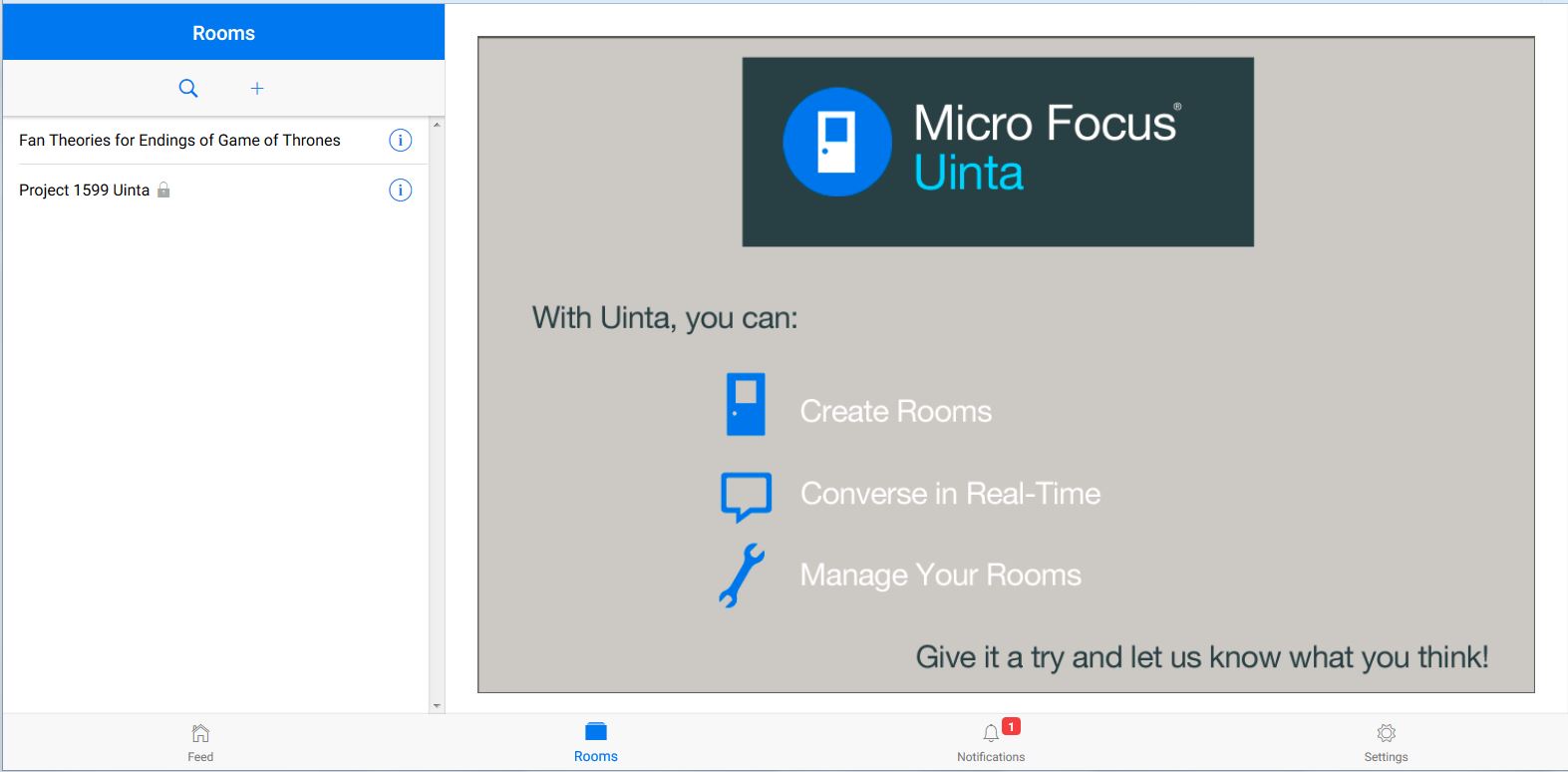
Rooms: your conversation place
Suppose you’re the lead software engineer trying to develop a new product. That’s going to involve many different people and conversations. You have to work with an engineering team that will have to share confidential information about development. You might also have to engage larger teams doing market research, garnering user needs, or getting beta tester feedback. All of this might be tackled through in-person meetings, instant messaging, or email.
With GroupWise TeamWorks, you can simply start a conversation with different individuals and teams to get much of the needed information to work on your new product.
First of all, the engineer would need “rooms” to have these different conversations in. Rooms are where you start, participate, and manage all your GroupWise Teamworks conversations. Creating a new room is as simple as clicking on the “+” and deciding on a name for your room, along with a description for it.
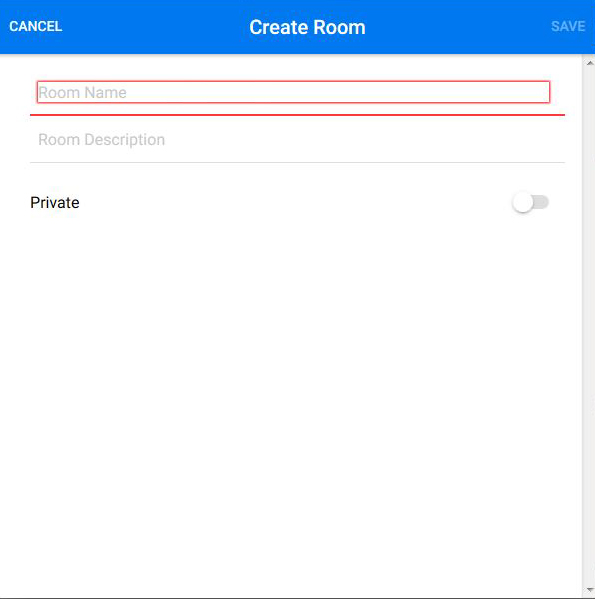
You also have the option of making the room private or not.
- Public Rooms are visible to and can be joined by anyone. They are discoverable through the search function as well. Members of the room can leave the conversation at any time—and have full control over their private notification settings for the room. By default, all rooms created in GroupWise TeamWorks are public unless marked as private.
- Private Rooms are not visible or searchable by the general users of GroupWise TeamWorks. Users of a Private Room must be added and deleted by the person who set up the room itself. Other users of the room can see who is included in the room, but cannot add or invite others. Individual members of the Private Room cannot delete themselves from the room group either. However, they still control their private notification settings about the conversations happening in the room and can choose to leave the room itself, but will still have access to the room as long as they remain a member of the room group.
Topics: the starting level of all conversations
Once a room is created (and members invited if it is a private room), you simply start interacting by entering a room. Once any room is entered, you have the ability to start a new topic of conversation right from the room’s root level. (figure 5).

As room members engage with a topic— all responses are noted in the topic itself, and new responses are noted in the notifications badge at the bottom of the page.
Clicking on the responses to any topic lets you see all the responses in a nested thread that shows the flow of the conversation—including who responded to what comment. Notice that each response is indented according to what topic or response was commented on (figure 6).

Notifications: knowing when someone has commented
In GroupWise TeamWorks, there are several ways to control how you get notified when someone has contributed to a conversation. Clicking on the “Notifications” badge at the bottom of the page pulls up the Notifications pane. This allows you to easily see who has commented on a topic or responded to your latest comment. Clicking on any of the comments in the Notifications pane brings you to that particular spot in the conversation and allows you to see how it all flows together. This allows you to respond to the original comment, or any of the replies in the thread. (figure 7).
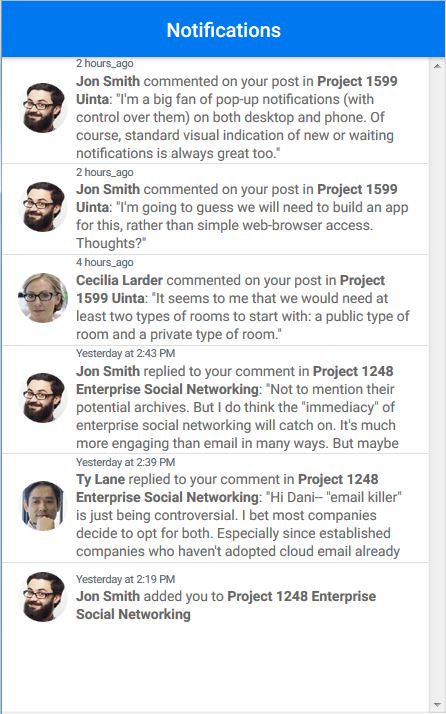
You control how you are notified and what you are notified about through the Room itself. Clicking on the information circle (an “i” in a circle) on any room will bring up a control panel that allows you to determine how you will be notified of new responses. You can either receive application pop-ups or email notifications—and opening each one determines if you will get notifications about direct replies to your comments, all comments in the thread, or no notifications at all as shown in figure 8.
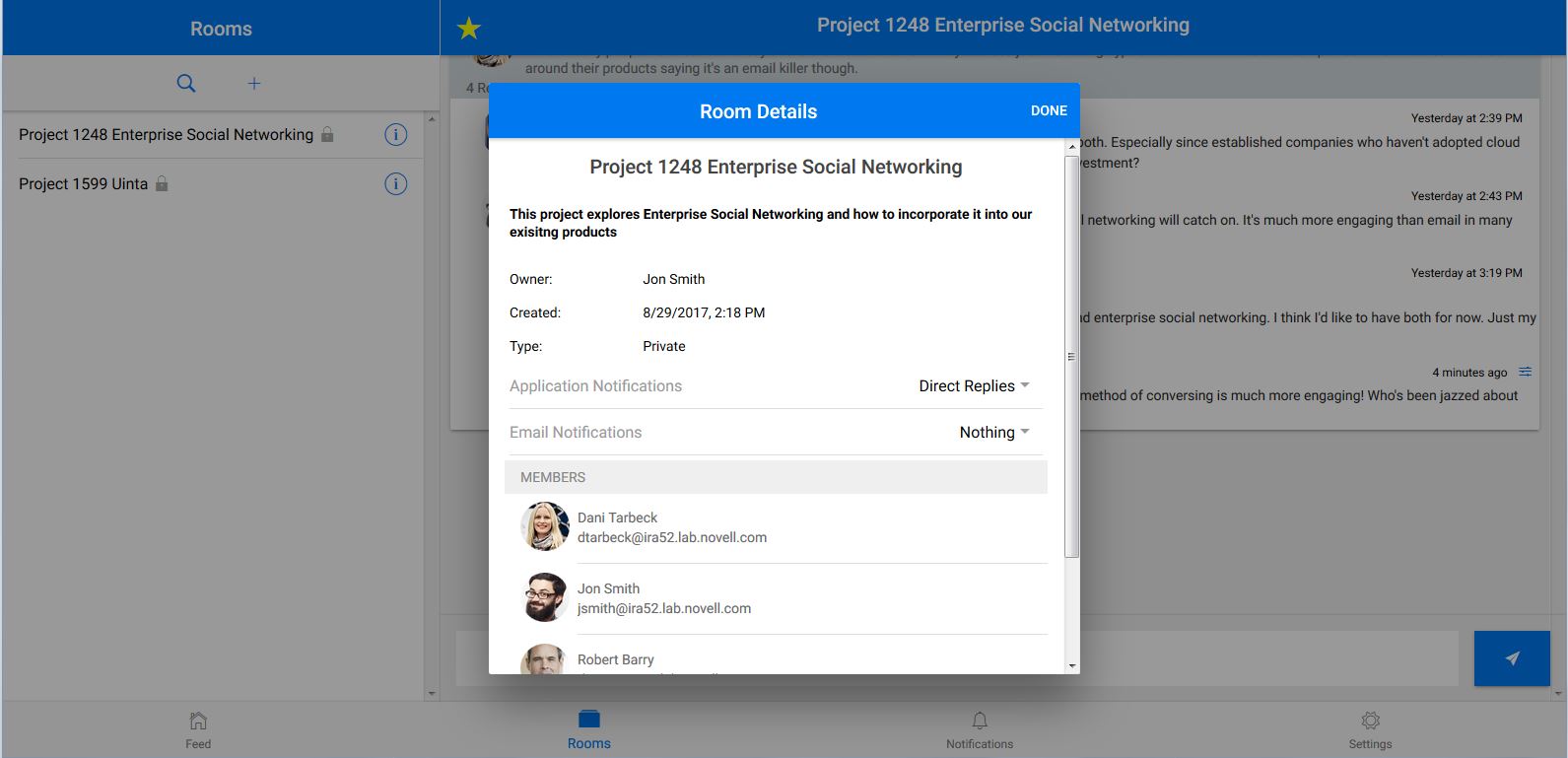
Pop-up notifications appear in the lower right corner of the desktop screen, much like those familiar with the GroupWise Notify pop-ups and contain who replied, either all or part of the message, along with a settings gear that allows you to quickly determine some of the notification preferences regarding the pop-ups themselves (figure 9).
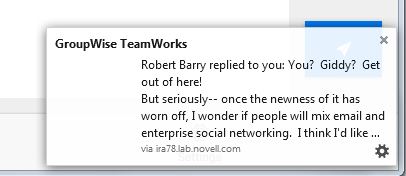
Getting to your Conversations
There are a few ways to interface with GroupWise TeamWorks. You can access via the Web by authenticating to the TeamWorks server. You can interface via iPhone or Android through mobile apps—or you can integrate GroupWise TeamWorks directly into the GroupWise 18 interface and have direct access to both your email and GroupWise TeamWorks conversations in a single desktop application.
This means GroupWise users can enjoy the both of best worlds—their traditional email, as well as the threaded, social conversations of GroupWise TeamWorks easily through a single interface. The benefit of this approach is that it removes the dilemma of email vs. social enterprise networking.
Both can be enjoyed from a single platform. Combined with the benefits of Messenger, GroupWise Mobility Service, and all the additional benefits of back-up, disaster recovery, archiving, improved mailbox management, anti-spam, anti-virus, and anti-malware—Enterprise Messaging is the way to go for a complete and modern communication platform.
The fact is, the nature of enterprise communications is constantly changing. GroupWise continues to adapt to and adopt new trends such as enterprise social networking—while evolving as platform with the release of Enterprise Messaging.
The release of Enterprise Messaging, along with the development of GroupWise TeamWorks, shows that Micro Focus is serious about maintaining a modern enterprise messaging platform built for today’s dynamic and mobile world.
This article was first published in OHM Issue 38 (2017/3), p7-10.

